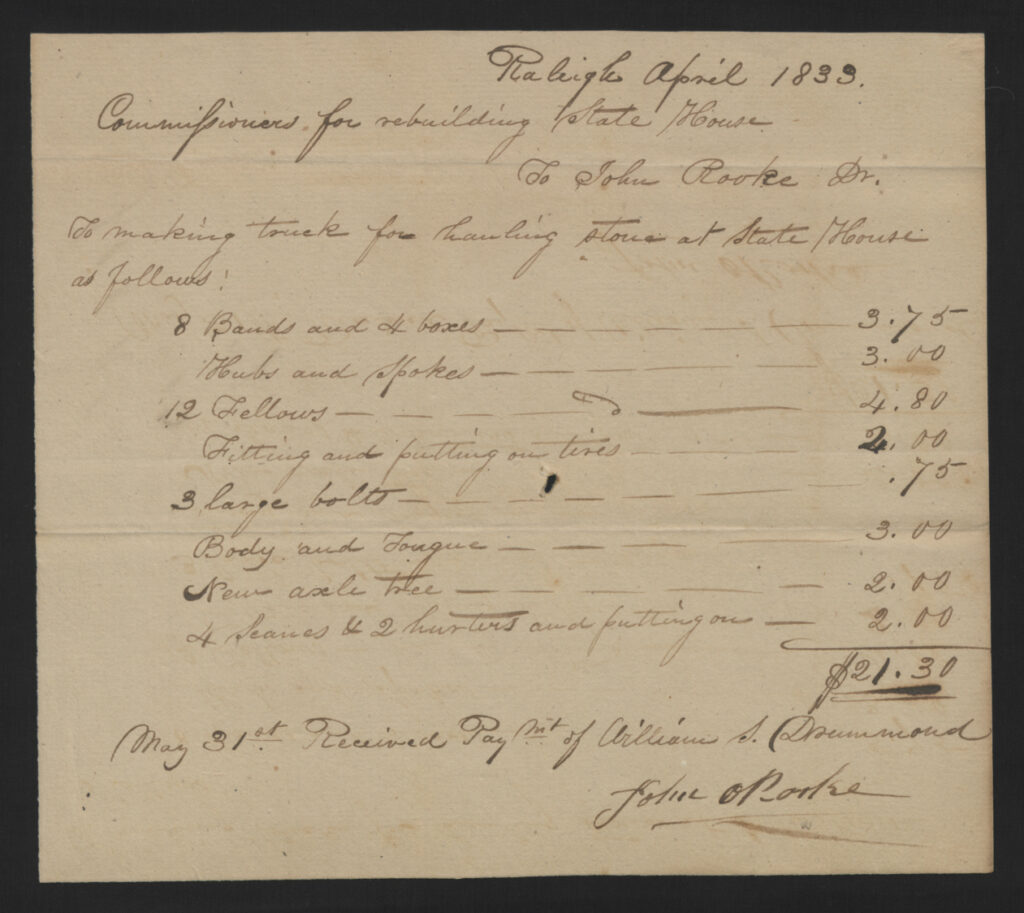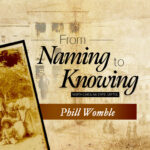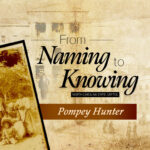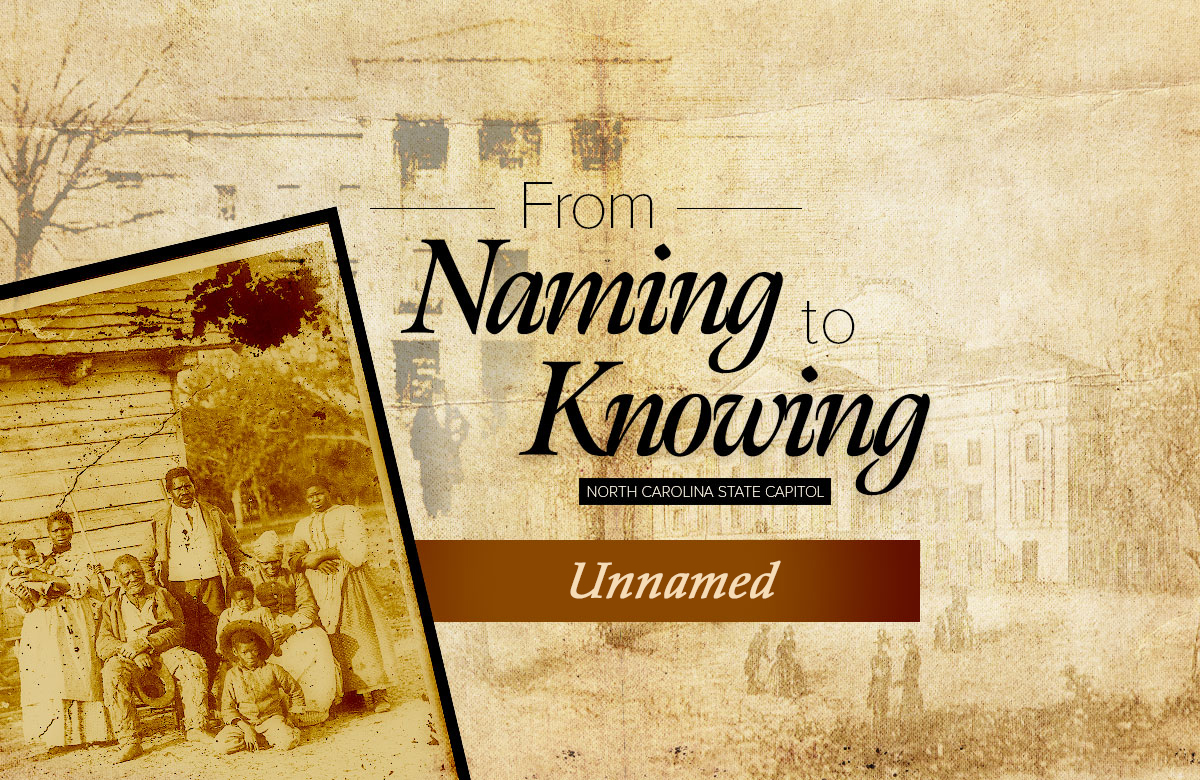
Retracing the lives of enslaved people can be a difficult process, as those keeping and updating written records were primarily White people and often enslavers. In several cases, historical documents refer to enslaved laborers at the first State House and Capitol but do not record individual names. The system of slavery held people as property – those keeping records might not deem it necessary to record an individual enslaved person’s name.
For example, a receipt kept in the Treasurer’s and Comptroller’s Records in the State Archives of North Carolina notes a group of enslaved men but does not include their names. In May 1833, lead architect William Drummond authorized payment to coach maker John Rorke [O’Rorke] for “making truck for hauling stone at State House.” The receipt shows payment for various items like “8 bands and 4 boxes” and “3 large bolts.” Listed in the itemized expenses is a note for “12 Fellows” whose labor brought in $4.80 to O’Rorke. Federal census records in 1840 and 1850 show that O’Rorke enslaved thirteen to fifteen people, so it makes sense that he hired out enslaved laborers for this work at the State House site.
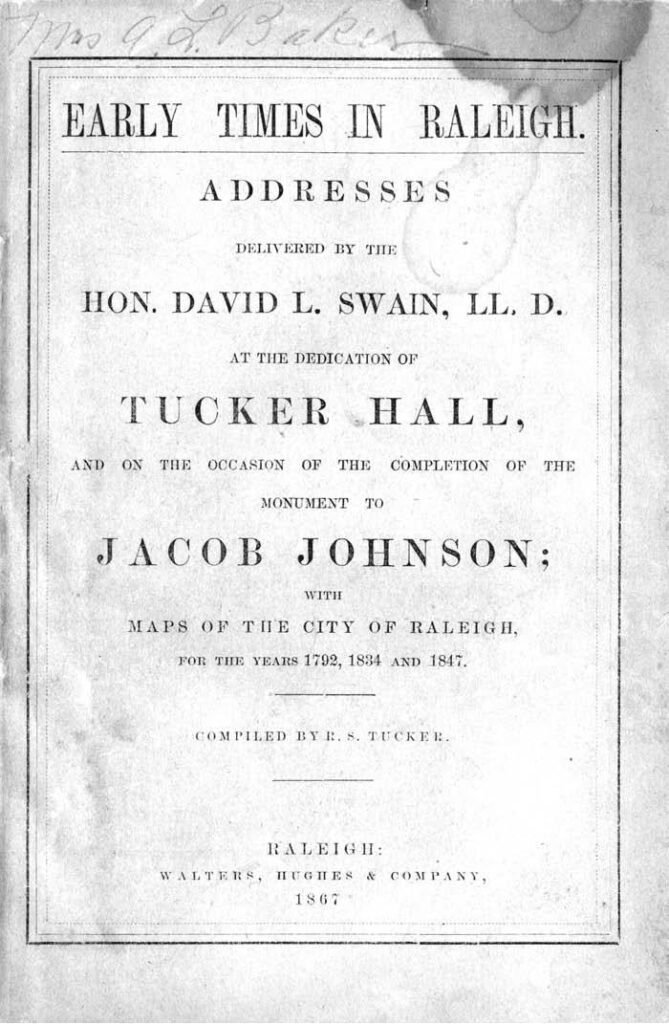
Another instance shows an unnamed person working at the Capitol at the end of the Civil War. Former Governor David Swain recorded the following: “It was my lot on the morning of the 13th of April, 1865, as the friend and representative of Governor Vance, to find, on approaching the Southern front of the capitol, the doors and windows closed, and a deeper, more dreadful silence shrouding the city, than during the sad catastrophe to which I have referred. I met at the South front of the Capitol, however, a negro servant, who waited on the executive department, the only human being who had dared to venture beyond his door. He delivered me the keys and assisted me in opening the doors and windows of the executive office, and I took my station at the entrance, with a safe conduct from General Sherman in my hand, prepared to surrender the Capitol at the demand of his approaching forces.”
Who was this “negro servant” entrusted with the keys to the Capitol before its surrender to the US Military? “Servant” was a frequently used euphemism, and he was probably an enslaved person working at the Capitol at the time. We may never know his identity.
References:
- Early times in Raleigh : addresses delivered … at the dedication of Tucker Hall, and on the occasion of the completion of the monument to Jacob Johnson with maps of the city of Raleigh, for the years 1792, 1834 and 1847. Accessed in the Raleigh History Collection, State Archives of North Carolina.
- State Capitol: Hauling Lime and Rock from Quarry. Accessed in the Treasurer’s & Comptroller’s Records, State Archives of North Carolina.
- Report of the commissioners appointed to superintend the re-building of the State Capitol. Philo White, Printer to the State, Legislature of North Carolina, 1834. Accessed in the Raleigh History Collection, State Archives of North Carolina.
